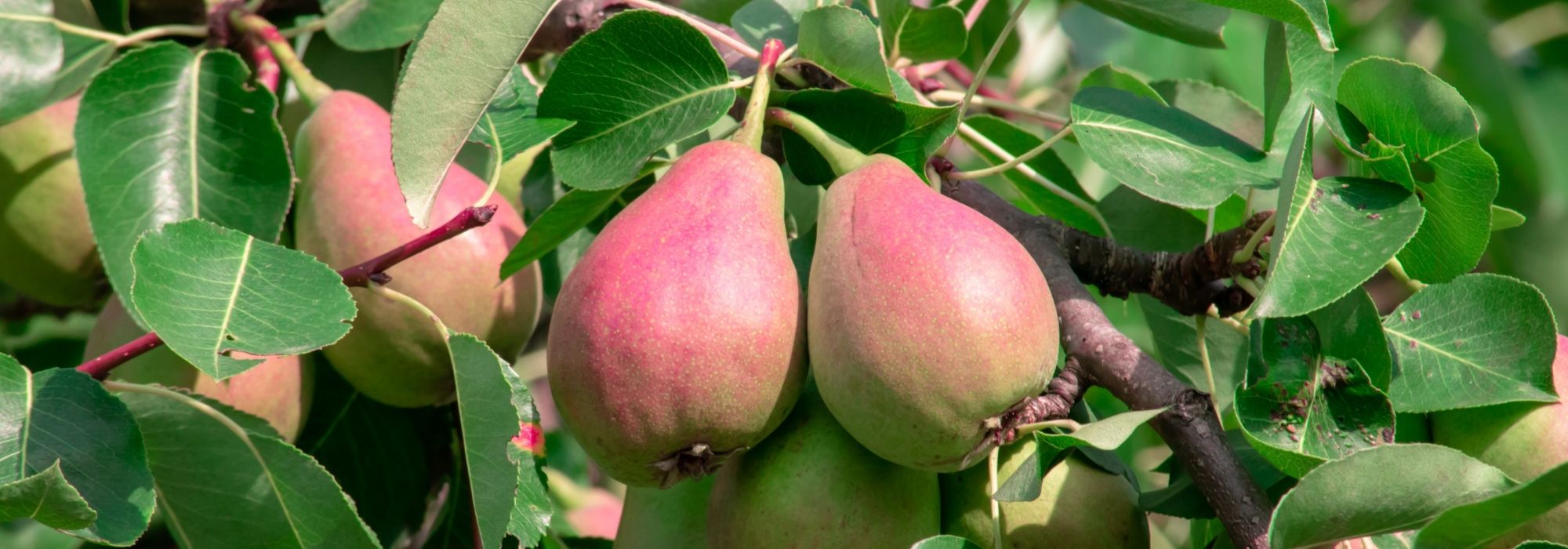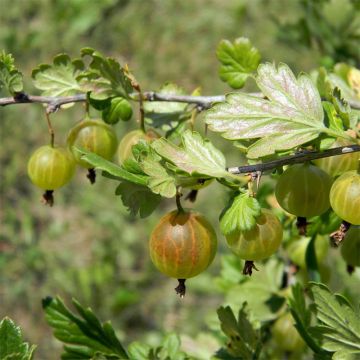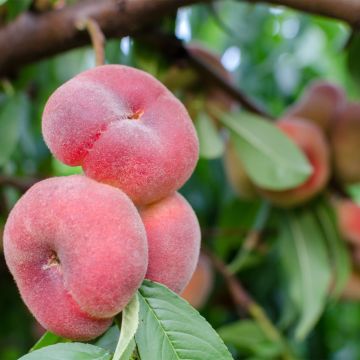

x Sorbopyrus auricularis
x Sorbopyrus auricularis
x Sorbopyrus auricularis (irregularis)
European pear and common whitebeam hybrid
Special offer!
Receive a €20 voucher for any order over €90 (excluding delivery costs, credit notes, and plastic-free options)!
1- Add your favorite plants to your cart.
2- Once you have reached €90, confirm your order (you can even choose the delivery date!).
3- As soon as your order is shipped, you will receive an email containing your voucher code, valid for 3 months (90 days).
Your voucher is unique and can only be used once, for any order with a minimum value of €20, excluding delivery costs.
Can be combined with other current offers, non-divisible and non-refundable.
Home or relay delivery (depending on size and destination)
Schedule delivery date,
and select date in basket
This plant carries a 24 months recovery warranty
More information
We guarantee the quality of our plants for a full growing cycle, and will replace at our expense any plant that fails to recover under normal climatic and planting conditions.
Would this plant suit my garden?
Set up your Plantfit profile →
Description
The Bollwyller Pear or x Sorbopyrus auricularis is an original hybrid, very interesting for the quality of its fruits. It is the result of a cross between a common pear tree, Pyrus communis, and a whitebeam tree, Sorbus aria. According to existing literature, it first appeared in 1610 in Botwiller, Alsace. Although it is present for its botanical value in several arboretums around the world, it has been very little cultivated for its fruit, which is nevertheless quite interesting. However, patience is required, as it is known to produce its first flowering and fruiting only after 10 years of cultivation. The fruit, resembling a small pear, has a fairly firm flesh that is buttery, sweet, and fragrant. Its unique taste seems to have been passed down from the original union of its two parents.
x Sorbopyrus auricularis is the result of interspecific crossbreeding between two plants of the Rosaceae family, the pear tree, Pyrus communis, and the common whitebeam, Sorbus aria. Like most hybrids between two species, it is sterile and very rarely produces viable seeds. It appeared before 1619 in Alsace, in Botwiller, and has been reproduced by grafting ever since. It is often observed that when transmitted by grafting, certain characters that were believed to be fixed revert to their original state. The Bollwiller pear is an exceptional example of stability after four centuries of graft transmission. Its genetic heritage is currently being studied.
The Bollwyller pear forms a tall tree, reaching 15 to 20 metres in height at maturity, with a pyramidal and open habit. Its leaves measure 7 to 11 cm in length and 5 to 6 cm in width and are covered with a silver and velvety felt on the underside. The flowers appear in clusters on shorter branches. The petals are white, but the stamens at the centre of the flower are pink. The sepals that hold the petals in place are covered with the same silver-white fuzz as the undersides of the leaves. The fruit is spiralled, about the size of an apricot, and ripens around mid-August. Its yellow colour turns reddish-orange on the sun-exposed side, and its flesh remains firm at maturity. The tree is resistant to scab, generally unaffected by insects or diseases that sometimes affect pear trees. It appears to be very susceptible to fire blight.
As it is large, it is best to plant the Bollwiller Pear as a specimen tree. It is not demanding in terms of soil type, but its growth will be better in rich and moist soils. It thrives in sunny locations with well-drained soil. The tree is completely hardy and requires little to no pruning. It takes a long time to bear fruit, but the fruit is delicious. If you have the space, desire, and patience, the fruits are definitely worth the wait.
Plant habit
Flowering
Foliage
Botanical data
x Sorbopyrus
auricularis (irregularis)
Rosaceae
European pear and common whitebeam hybrid
Western Europe
Other Fruit trees A to Z
View all →Planting and care
x Sorbopyrus auricularis thrives in sunny locations. Plant it in well-prepared, well-drained, ordinary soil. A little moisture won't harm it as long as the water doesn't stagnate in winter. Preferably plant it in October or November by digging a large planting hole, amend with dehydrated horn or dried blood, create good drainage if necessary (in heavy clay soil), then backfill it with a mixture of garden soil and one-third of compost or well-rotted compost, leaving the collar exposed. Once well-rooted, it can do without watering and requires very little maintenance. It is a resilient tree.
Planting period
Intended location
Care
Planting & care advice
This item has not been reviewed yet - be the first to leave a review about it.
Haven't found what you were looking for?
Hardiness is the lowest winter temperature a plant can endure without suffering serious damage or even dying. However, hardiness is affected by location (a sheltered area, such as a patio), protection (winter cover) and soil type (hardiness is improved by well-drained soil).

Photo Sharing Terms & Conditions
In order to encourage gardeners to interact and share their experiences, Promesse de fleurs offers various media enabling content to be uploaded onto its Site - in particular via the ‘Photo sharing’ module.
The User agrees to refrain from:
- Posting any content that is illegal, prejudicial, insulting, racist, inciteful to hatred, revisionist, contrary to public decency, that infringes on privacy or on the privacy rights of third parties, in particular the publicity rights of persons and goods, intellectual property rights, or the right to privacy.
- Submitting content on behalf of a third party;
- Impersonate the identity of a third party and/or publish any personal information about a third party;
In general, the User undertakes to refrain from any unethical behaviour.
All Content (in particular text, comments, files, images, photos, videos, creative works, etc.), which may be subject to property or intellectual property rights, image or other private rights, shall remain the property of the User, subject to the limited rights granted by the terms of the licence granted by Promesse de fleurs as stated below. Users are at liberty to publish or not to publish such Content on the Site, notably via the ‘Photo Sharing’ facility, and accept that this Content shall be made public and freely accessible, notably on the Internet.
Users further acknowledge, undertake to have ,and guarantee that they hold all necessary rights and permissions to publish such material on the Site, in particular with regard to the legislation in force pertaining to any privacy, property, intellectual property, image, or contractual rights, or rights of any other nature. By publishing such Content on the Site, Users acknowledge accepting full liability as publishers of the Content within the meaning of the law, and grant Promesse de fleurs, free of charge, an inclusive, worldwide licence for the said Content for the entire duration of its publication, including all reproduction, representation, up/downloading, displaying, performing, transmission, and storage rights.
Users also grant permission for their name to be linked to the Content and accept that this link may not always be made available.
By engaging in posting material, Users consent to their Content becoming automatically accessible on the Internet, in particular on other sites and/or blogs and/or web pages of the Promesse de fleurs site, including in particular social pages and the Promesse de fleurs catalogue.
Users may secure the removal of entrusted content free of charge by issuing a simple request via our contact form.
The flowering period indicated on our website applies to countries and regions located in USDA zone 8 (France, the United Kingdom, Ireland, the Netherlands, etc.)
It will vary according to where you live:
- In zones 9 to 10 (Italy, Spain, Greece, etc.), flowering will occur about 2 to 4 weeks earlier.
- In zones 6 to 7 (Germany, Poland, Slovenia, and lower mountainous regions), flowering will be delayed by 2 to 3 weeks.
- In zone 5 (Central Europe, Scandinavia), blooming will be delayed by 3 to 5 weeks.
In temperate climates, pruning of spring-flowering shrubs (forsythia, spireas, etc.) should be done just after flowering.
Pruning of summer-flowering shrubs (Indian Lilac, Perovskia, etc.) can be done in winter or spring.
In cold regions as well as with frost-sensitive plants, avoid pruning too early when severe frosts may still occur.
The planting period indicated on our website applies to countries and regions located in USDA zone 8 (France, United Kingdom, Ireland, Netherlands).
It will vary according to where you live:
- In Mediterranean zones (Marseille, Madrid, Milan, etc.), autumn and winter are the best planting periods.
- In continental zones (Strasbourg, Munich, Vienna, etc.), delay planting by 2 to 3 weeks in spring and bring it forward by 2 to 4 weeks in autumn.
- In mountainous regions (the Alps, Pyrenees, Carpathians, etc.), it is best to plant in late spring (May-June) or late summer (August-September).
The harvesting period indicated on our website applies to countries and regions in USDA zone 8 (France, England, Ireland, the Netherlands).
In colder areas (Scandinavia, Poland, Austria...) fruit and vegetable harvests are likely to be delayed by 3-4 weeks.
In warmer areas (Italy, Spain, Greece, etc.), harvesting will probably take place earlier, depending on weather conditions.
The sowing periods indicated on our website apply to countries and regions within USDA Zone 8 (France, UK, Ireland, Netherlands).
In colder areas (Scandinavia, Poland, Austria...), delay any outdoor sowing by 3-4 weeks, or sow under glass.
In warmer climes (Italy, Spain, Greece, etc.), bring outdoor sowing forward by a few weeks.

















































